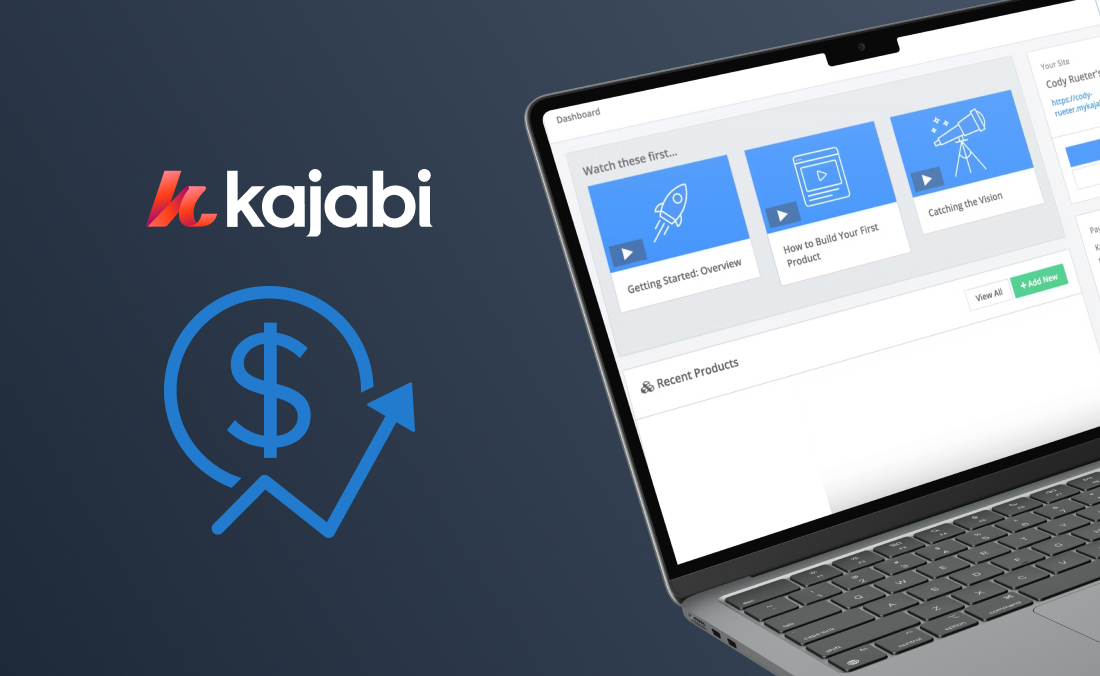Rebranding your coaching business doesn’t mean slapping a new logo on your website and calling it a day. It’s a strategic process that involves redefining how you and your business are perceived by others.
In this AI-powered age, the world is changing faster than ever before. But refreshing your online brand presence can foster a genuine connection with your audience in ways that AI cannot. Whatever kind of coach you are, understanding how to rebrand yourself is crucial for staying relevant and standing out online. It’s how you achieve the long-term success you want.
What is Personal Rebranding?
Personal rebranding involves deliberately transforming your public image and professional persona. It’s a way to showcase your personal growth and adapt to changes in your career or industry.
By reshaping your brand, you can better align your identity with your goals and ambitions, like:
- Changing your career path
- Reaching a new target audience
- Refining your messaging
But remember: rebranding is an ongoing process that requires careful planning and execution.
Why Consider Rebranding?
Rebranding lets you present a refreshed image to potential clients and audiences, enhancing your appeal and creating new pathways for success.
For example, if you have developed new skills or a more powerful unique value proposition, rebranding helps highlight these aspects and positions you as a thought leader in your field. And being recognized as a thought leader is crucial in the coaching industry, where your expertise is the core of your business!
What happens when you get rebranding right?
Successful rebranding can lead to:
- Increased visibility
- Stronger brand identity
- A more engaged online presence across social media platforms—like Meta, LinkedIn, X, etc.)
Let’s dive into the five steps you can take to achieve peak rebranding success.
Step 1: Assess Your Current Brand Identity
You want to change your brand, but what is your brand right now?
It’s crucial to evaluate your current brand identity before you start creating a new one. Understanding where you are will help you identify areas for improvement and set a clear path for transformation.
This process involves analyzing your existing brand strategy, online presence, and how your current target audience views you.
Analyze Your Old Brand
Take a serious look into your existing brand to understand its strengths and weaknesses. Reflect on your brand’s:
- Messaging
- Values
- Audience Perceptions
Are there parts of your brand that no longer align with your goals or personal growth? Assessing your old brand will help you understand what needs to change and how you can develop a new personal brand that better reflects your current ambitions and skills.
Evaluate Your Unique Selling Proposition
What makes you stand out as a coach? Your unique selling proposition is what sets you apart from the coaching competition, helping you stand out.Evaluate how your existing brand communicates your unique value and how it can be enhanced more clearly in your new brand. Consider the skills and experiences that make you the best coach for your potential clients, and how you can leverage these in your rebranding efforts to inspire them to hire you.

Step 2: Define Your New Brand Strategy
This step is the foundation of a successful rebrand. It involves setting clear objectives, understanding your target audience, and creating a narrative that resonates with them.
Set Clear Objectives for Your Rebranding Process
Define what you aim to achieve with your rebrand. Setting specific goals will guide your rebranding efforts and help you measure success over time.
What are your goals? Could they be:
- A career change
- Expanding your reach
- Enhancing your online presence
Maybe it’s all three? Deciding on this earlier in the process will help keep your rebranding process focused.
Research Your Target Audience
When you know your ideal clients inside and out, you know how to communicate your value to them. The best way to learn about your target audience is to ask!
Identify the needs and preferences of the audience you want to attract with your new brand so it meets their expectations.
Conduct Surveys and Interviews
Reach out to your existing clients or potential customers to gather insights into their needs and preferences. Use online surveys or conduct one-on-one interviews to uncover valuable information about what they value most in a brand and what challenges they face.
Analyze Competitors
Study the branding strategies of successful competitors in your industry. Identify what works for them and what doesn’t, focusing on their messaging, design, and customer engagement tactics. By understanding how they connect with their audience, you can differentiate your new brand and fill gaps in the market.
Create Detailed Buyer Personas
Develop comprehensive profiles of your ideal customers, including their demographics, interests, and buying behavior. Use these personas to guide your branding decisions and ensure your messaging resonates with the right audience. Consider factors like age, occupation, and lifestyle to paint a vivid picture of who you’re targeting.
Create a Coherent Narrative
Have you ever read a story where the plot randomly changes in the middle? Your brand is like a story, and you want your audience to understand why your story has a new chapter.
Incorporate your past experiences with your new brand identity in a way that makes sense. A coherent narrative will help your audience understand your journey and the reasons behind your rebranding.
Use this narrative to highlight your unique value. Keep your messaging consistent and share it across all your online profiles, including your personal website and social media, to have the largest reach.

Step 3: Revamp Your Online Presence
Enhancing your digital footprint can significantly impact how your new brand is perceived by potential clients and audiences. This step involves optimizing your social media profiles, enhancing your personal website, and using various content platforms to expand your reach and establish authority.
Optimize Your Social Media Profiles
Update your social media profiles to reflect your new brand identity. Use relevant keywords that highlight your new skills and expertise that make your online profiles stand out.
(Now’s the time to add that new logo you have. 😉)
Enhance Your Personal Website
Social media accounts are like your brand’s front porch, welcoming leads and giving them a taste of your hospitality. But your personal website is where you invite them in and have the time to form a deeper connection.
Make sure your revised website offers valuable content to your target audience. Use your website as a platform to showcase your unique value proposition and the services or products you offer.
Produce a Podcast to Expand Your Reach
Between Spotify, Amazon, and Apple, there are millions of people eager to hear from people who can help solve their problems. What better host to do that than a coach like you?
With a podcast, you can share insights and connect with your audience on a deeper level. And it accomplishes many brand building strategies at once: it establishes your expertise in your coaching field, builds your online audience, and offers another way to guide people through your customer journey to turn leads into customers.
Creating a podcast is optional, but it can be a game-changer. Many of Kartra’s most successful customers have leveraged podcasts to significantly boost their income, especially if they don’t have a massive audience. For example, Dielle Charon, Kartra customer and Business Coach with under 10K followers, earns over 7 figures annually. She attributes much of her success to Kartra and her podcast.
Step 4: Develop a Marketing Strategy
An effective marketing strategy will support your rebranding efforts and help you reach your goals faster. There are many strategies of marketing for coaches, but three key areas to focus on are content creation, partnerships, and constant improvement.
Content Creation and Thought Leadership
In addition to a podcast, you can create valuable content with blogs and YouTube videos to demonstrate your expertise. You could also consider hosting webinars or speaking at industry events to showcase your expertise on a more personal level.

Leverage Partnerships and Collaborations
Collaborate with industry leaders and influencers to expand your reach and gain credibility. Partnerships can enhance your brand’s visibility and attract new opportunities.
Look for opportunities to guest blog, co-host podcasts, or participate in joint ventures that align with your brand identity. These collaborations can introduce you to new audiences.
Monitor and Adjust Your Strategy
Sometimes a marketing strategy doesn’t work out like you hoped it would. That’s okay! When you keep track of your marketing strategies, you can make the necessary adjustments to improve them.
How is your audience responding to your messaging? That should be your marketing North Star. As a coach, your brand is YOU.
Make sure your messaging is communicating how valuable you are to your audience. Without third party cookies in marketing becoming the reality, it’s even harder to navigate how to grow your audience. That’s why it’s so important to communicate your value clearly to people interested in buying.
Step 5: Maintain and Evolve Your Brand
Rebranding is not a one-time event but an ongoing process of adaptation and growth. You probably already knew that if you’re considering a rebrand!
Continuously refine your brand so it remains relevant and meets the changing needs of your audience. Embrace change and be open to new opportunities that align with your brand identity. Regularly update your online presence and content to reflect your personal growth and evolving skill set.
When you maintain your brand’s momentum, you can foster a community around your new personal brand – even if it changes again!
Cultivate Your Brand Community
Engage with your audience and build a community around your brand. Encourage feedback and foster relationships to strengthen your brand’s presence. Use social media platforms and email newsletters to maintain communication with your audience and keep them informed about your latest endeavors.
You could also host:
- Live events
- Webinars
- Q&A sessions
This will help you connect with your audience on a personal level and reinforce your brand’s value. And group coaching is a great way to establish your brand’s community while increasing your revenue at the same time.

Measure Success and Reflect on Growth
Use metrics to evaluate the impact of your rebranding efforts. Track key performance indicators like engagement rates, follower growth, and website traffic to see if you’re heading in the right direction.
But it doesn’t all have to be about the numbers. Be sure to take time to celebrate the progress you’ve made. It’s both exhilarating and challenging to rebrand, and acknowledging both is important.
The Power of Personal Rebranding
Personal rebranding is a powerful tool for achieving growth and success in your coaching business. By embracing the opportunity to reinvent yourself, you can unlock new possibilities and create a brand that truly reflects your values and aspirations.
And when it resonates with your new target audience, that means you can help even more people!
View rebranding as an opportunity for personal and professional growth. By embracing change and taking control of your brand identity, you can create a new persona that aligns with your unique value and skills.
This journey of reinvention is not just about enhancing your online presence or updating your social media profiles. It’s about transforming your career and positioning yourself as a thought leader in your field – an essential step for any coach looking to scale.
Want to make your rebranding journey easier?
Get started with Kartra and create your entire online brand in one place, including landing pages, email marketing, online courses, and more.


